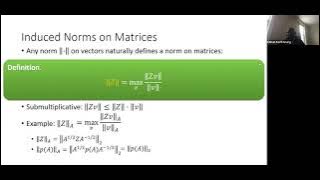Machine learning algorithms | Matrix theory | Linear algebra | Factorization
Non-negative matrix factorization
Non-negative matrix factorization (NMF or NNMF), also non-negative matrix approximation is a group of algorithms in multivariate analysis and linear algebra where a matrix V is factorized into (usually) two matrices W and H, with the property that all three matrices have no negative elements. This non-negativity makes the resulting matrices easier to inspect. Also, in applications such as processing of audio spectrograms or muscular activity, non-negativity is inherent to the data being considered. Since the problem is not exactly solvable in general, it is commonly approximated numerically. NMF finds applications in such fields as astronomy, computer vision, document clustering, missing data imputation, chemometrics, audio signal processing, recommender systems, and bioinformatics. (Wikipedia).




















